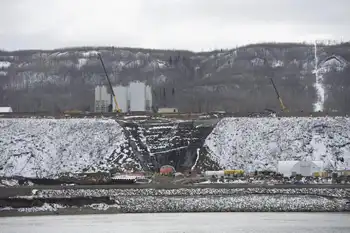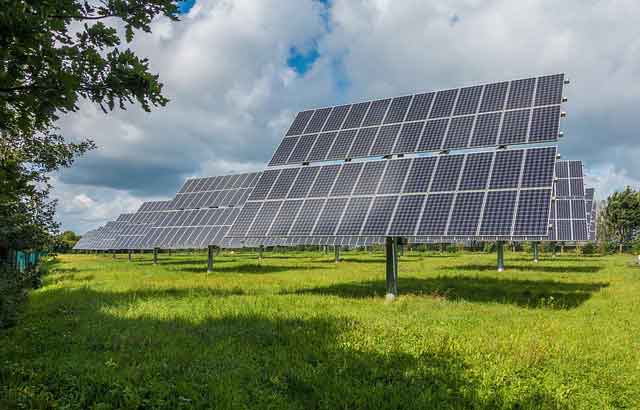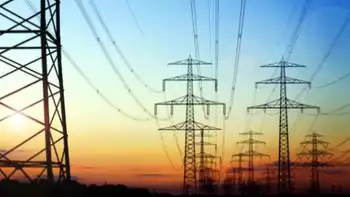Solar plasma knocked out power 20 years ago
By Scientific American
NFPA 70e Training - Arc Flash
Our customized live online or in‑person group training can be delivered to your staff at your location.

- Live Online
- 6 hours Instructor-led
- Group Training Available
Two decades ago, one of the most extreme examples of space weather in modern times wracked the planet. Space weather comes primarily from the sun, which constantly sends particles and energy Earth's way via the so-called solar wind.
But like conventional terrestrial weather, storms and other disruptions on the sun occur. The sun frequently emits bursts of matter and energy called flares, which are triggered by a star's natural magnetic turbulence. Occasionally, however, the sun also belches a billion-ton plume of superheated plasma (ionized gas), known as a coronal mass ejection (CME). If this massive bubble of plasma and radiation is aimed right at Earth, it can pose a serious threat to satellite operations and even to power grids on the ground, along with modern civilization that depends on their electricity.
On March 10, 1989, a CME about the size of 36 Earths erupted from the sun's roiling surface and ripped through space at a million miles (1.6 million kilometers) per hour. Two days later, the torrid gas cloud crashed against Earth's magnetosphere — the magnetic field generated by the planet's spinning molten iron core that helps deflect the solar wind and more potent solar jetsam. This blast from the sun severely disrupted the magnetosphere and set off a geomagnetic superstorm.
As Sten Odenwald, an astrophysicist at The Catholic University of America in Washington, D.C., relates in his book The 23rd Cycle, what ensued was one of the grandest displays of auroras — usually manifested as the aurora borealis (northern lights) or aurora australis (southern lights) — in recent times. Auroras form when Earth's magnetic field funnels highly energetic particles toward the poles where the field emanates. There, the charged particles strike molecules in Earth's atmosphere that release photons of various colors (red hues come from oxygen, for example) and light up polar regions in frequent auroral displays.
But the event of March 13 (the date fell on a Monday that year) was no mere breath of solar wind or a flare that kindled a transient, flickering light show. Undulating, multicolored auroras spread as far south as Texas and Cuba, and a red glow appeared in the night sky over most of the world. Some startled people who had never seen an aurora before even feared that nuclear war had broken out, Odenwald recounts.
Some satellites, the closest to the action, suffered electronic glitches. "That wasn't so much an issue then, as there were far fewer satellites in orbit compared to now," Odenwald says. The space storm's effects extended all the way to Earth's surface and even below it in the form of geomagnetically induced currents (GICs). These electrical surges infiltrated power grids all over North America and northern Europe, and even destroyed a transformer at a nuclear power plant in New Jersey.
Most significantly, at about 2:45 A.M. local time on Monday, March 13, Canada's Hydro-Québec power utility's grid crashed when safety systems sensed a power overload caused by the currents pulsing through the ground. The failure knocked out electricity to six million people in northeastern Canada for as long as nine hours — the biggest outage ever caused by a geomagnetic storm.
Of course, electrical generation for distribution to homes and businesses is not even 130 years old. And far bigger geomagnetic storms have struck in the recent past (in 1859 and 1921, most prominently), and are all but certain to in the future.
The sun currently is experiencing what is called the solar minimum — the least magnetically active period of an 11-year cycle. As telltale dark blotches on its surface called sunspots multiply, indicating magnetic upswells, solar flares and CMEs grow in frequency, peaking just after the solar maximum. The next such tempestuous season is slated for 2012 or so.
Anticipating this next round of solar monsoons, the National Academy of Sciences recently released a study based on a workshop in summer 2008 that broadly addressed many of the socioeconomic ramifications of space storms. "There's been no other report like this for space weather," says lead study author Daniel Baker, a space physicist at the University of Colorado at Boulder's Laboratory for Atmospheric and Space Physics (LASP). "And what we found was that space weather affects many industries in some surprising ways."
The chances of a truly devastating power outage from space weather remain low, the report says. But should one occur, it warns, modern society's dependence on electrical power to maintain everything from banking systems to potable water supplies could indeed cause a national — if not international — emergency costing trillions of dollars over years of recovery.
"People are of a mind that because nothing too terrible has happened in the past, that something won't now," Odenwald says. "We've heard that kind of logic before, and we got Hurricane Katrina. The cost of not preparing for extreme space weather could be dramatic."
Space weather's effects on energy infrastructure are not just limited to the power grid. It also contributes to rust and corrosion in oil and gas pipelines. In much the same way that power lines are affected, long connected structures can experience large voltage differentials from one area to the next, leading to the flow of unwanted electrical current. "A person or even something the size of a house is not affected by these ground currents because they're too small," Odenwald says. "But if you were somehow holding hands with another person a hundred kilometers away, say, then you would have a voltage difference." In Alaska, engineers have found that the Trans-Alaska Pipeline degrades faster than expected due to the frequent ground currents in northern latitudes.
On flights over polar regions during geomagnetic events, airplanes can experience radio blackouts and equipment disruptions. And satellites can go haywire, upsetting prosaic pursuits like watching television, or more crucially disturbing the global positioning system (GPS). Numerous industries rely on GPS for accurate navigation and orientation, and the military uses GPS for key purposes, including missile tracking and guidance.
In light of these far-flung effects of inclement space weather, concerned experts have called for expanding our prediction capabilities. The current fleet of government science satellites can forecast the possibility of a major space storm only a few days out. (One craft, the Advanced Composition Explorer (ACE), can fire off critical alerts if a CME is within 45 minutes of striking Earth.) Civilian space weather alerts come courtesy of the National Oceanic & Atmospheric Administration's Space Weather Prediction Center.











